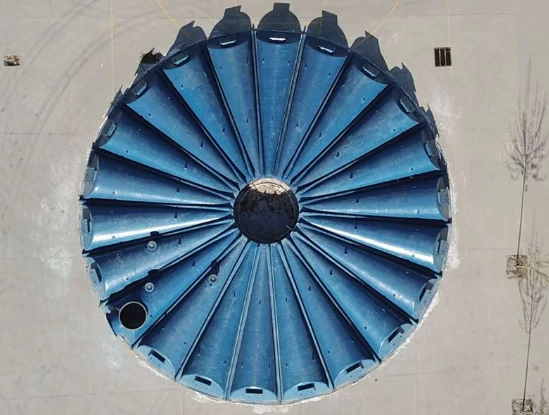
-
 Afrikaans
Afrikaans -
 Albanian
Albanian -
 Amharic
Amharic -
 Arabic
Arabic -
 Armenian
Armenian -
 Azerbaijani
Azerbaijani -
 Basque
Basque -
 Belarusian
Belarusian -
 Bengali
Bengali -
 Bosnian
Bosnian -
 Bulgarian
Bulgarian -
 Catalan
Catalan -
 Cebuano
Cebuano -
 China
China -
 China (Taiwan)
China (Taiwan) -
 Corsican
Corsican -
 Croatian
Croatian -
 Czech
Czech -
 Danish
Danish -
 Dutch
Dutch -
 English
English -
 Esperanto
Esperanto -
 Estonian
Estonian -
 Finnish
Finnish -
 French
French -
 Frisian
Frisian -
 Galician
Galician -
 Georgian
Georgian -
 German
German -
 Greek
Greek -
 Gujarati
Gujarati -
 Haitian Creole
Haitian Creole -
 hausa
hausa -
 hawaiian
hawaiian -
 Hebrew
Hebrew -
 Hindi
Hindi -
 Miao
Miao -
 Hungarian
Hungarian -
 Icelandic
Icelandic -
 igbo
igbo -
 Indonesian
Indonesian -
 irish
irish -
 Italian
Italian -
 Japanese
Japanese -
 Javanese
Javanese -
 Kannada
Kannada -
 kazakh
kazakh -
 Khmer
Khmer -
 Rwandese
Rwandese -
 Korean
Korean -
 Kurdish
Kurdish -
 Kyrgyz
Kyrgyz -
 Lao
Lao -
 Latin
Latin -
 Latvian
Latvian -
 Lithuanian
Lithuanian -
 Luxembourgish
Luxembourgish -
 Macedonian
Macedonian -
 Malgashi
Malgashi -
 Malay
Malay -
 Malayalam
Malayalam -
 Maltese
Maltese -
 Maori
Maori -
 Marathi
Marathi -
 Mongolian
Mongolian -
 Myanmar
Myanmar -
 Nepali
Nepali -
 Norwegian
Norwegian -
 Norwegian
Norwegian -
 Occitan
Occitan -
 Pashto
Pashto -
 Persian
Persian -
 Polish
Polish -
 Portuguese
Portuguese -
 Punjabi
Punjabi -
 Romanian
Romanian -
 Russian
Russian -
 Samoan
Samoan -
 Scottish Gaelic
Scottish Gaelic -
 Serbian
Serbian -
 Sesotho
Sesotho -
 Shona
Shona -
 Sindhi
Sindhi -
 Sinhala
Sinhala -
 Slovak
Slovak -
 Slovenian
Slovenian -
 Somali
Somali -
 Spanish
Spanish -
 Sundanese
Sundanese -
 Swahili
Swahili -
 Swedish
Swedish -
 Tagalog
Tagalog -
 Tajik
Tajik -
 Tamil
Tamil -
 Tatar
Tatar -
 Telugu
Telugu -
 Thai
Thai -
 Turkish
Turkish -
 Turkmen
Turkmen -
 Ukrainian
Ukrainian -
 Urdu
Urdu -
 Uighur
Uighur -
 Uzbek
Uzbek -
 Vietnamese
Vietnamese -
 Welsh
Welsh -
 Bantu
Bantu -
 Yiddish
Yiddish -
 Yoruba
Yoruba -
 Zulu
Zulu
Exploring the Key Features of Food Grade Fiberglass Equipment for Safety and Efficiency
Fiberglass Food Grade Equipment A Closer Look at Its Features and Benefits
In the food industry, maintaining hygiene and safety standards is paramount. This is where fiberglass food grade equipment comes into play. Comprising a mixture of glass fibers and resin, fiberglass is increasingly being used in food processing and handling. This article delves into the features and advantages of fiberglass food grade equipment, exploring why it is becoming a popular choice among food manufacturers.
Durability and Strength
One of the standout features of fiberglass food grade equipment is its remarkable durability. Unlike traditional materials like wood or metal, fiberglass does not corrode, rust, or rot, making it an ideal choice for environments where moisture and cleaning are prevalent. Its strength allows it to withstand significant impact and stress, which is essential in busy food production settings where equipment may be subjected to heavy use.
Additionally, fiberglass can be formulated to manage extreme temperatures, making it suitable for both hot and cold food processing
. The ability to resist thermal shock ensures that fiberglass equipment maintains its structural integrity, thereby promoting a longer lifespan compared to other materials.Hygienic Properties
Hygiene is crucial in the food industry, and fiberglass food grade equipment excels in this regard. It features a non-porous surface that prevents the absorption of bacteria, mold, and other pathogens. This characteristic significantly reduces the risk of contamination, a vital factor when dealing with food products. The smooth surfaces of fiberglass are easy to clean and sanitize, meeting the stringent hygiene regulations required in food processing areas.
Moreover, fiberglass is resistant to many chemicals, including acids and alkalis, so it can withstand various cleaning agents without degrading. This feature is particularly important in food facilities that utilize aggressive cleaning protocols to maintain sanitation.
fiberglass food grade equipment a closer look at its features and

Weight and Mobility
Another notable advantage of fiberglass food grade equipment is its lightweight nature. Compared to metal alternatives, fiberglass is significantly lighter, which facilitates easier handling and transport. This aspect makes it ideal for facilities that frequently rearrange their layout or require mobile equipment. The reduced weight also lowers transportation costs when moving equipment between locations or transporting it for maintenance.
Customization Options
Fiberglass equipment can be tailored to specific needs, providing versatile design options that are not easily achievable with other materials. Manufacturers can customize equipment shapes, sizes, and colors, contributing to efficient production workflows and enhancing brand identity. Customization can also meet unique processing needs, ensuring that equipment perfectly fits the facility's requirements.
Cost-Effectiveness
While the initial investment in fiberglass food grade equipment may be higher than conventional materials, its long-term benefits far outweigh the costs. The durability and reduced maintenance needs lead to cost savings over time. With fiberglass's resistance to wear and tear, companies can expect lower replacement rates, which further enhances its overall cost-effectiveness.
Conclusion
In conclusion, fiberglass food grade equipment presents a myriad of features that make it an excellent choice for the food industry. Its durability, hygienic properties, lightweight characteristics, customizability, and cost-effectiveness position it as a suitable solution for modern food processing challenges. As food safety regulations continue to evolve, and as the industry seeks innovative materials that support sanitation and efficiency, fiberglass stands out as a highly reliable option. Embracing this advanced technology can help food manufacturers not only comply with standards but also enhance their operational effectiveness and product integrity.









